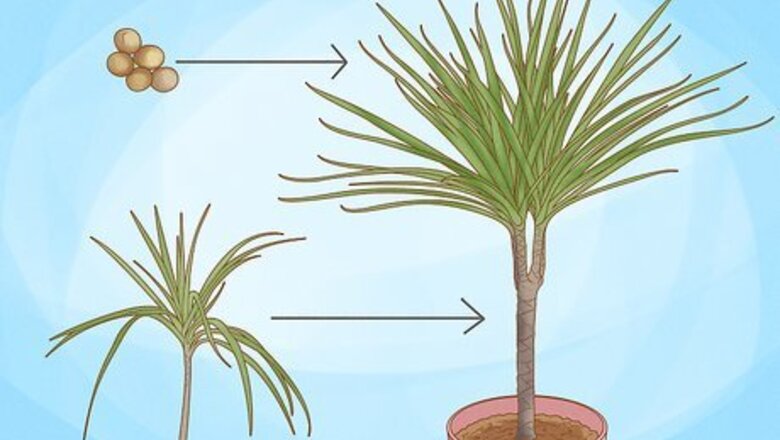
views
Planting Dracaena Marginata
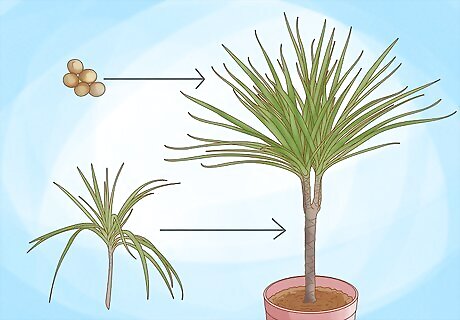
Acquire seeds or plant cuttings. To cultivate Dracaena Marginata at home, purchase a packet of starter seeds that you can grow from scratch. If you'd rather skip the initial germination phase, larger cuttings can be taken from the tips or cane (the long, woody stalk from which the leaves sprout). Both forms will flourish equally well so long as they are properly cared for. Look for Dracaena specimens at your local greenhouse or plant nursery. Soaking the seeds in fresh water for 3-5 days before planting them will aid in germination. It's also possible to transplant young plants whole from one pot or garden plot to another.
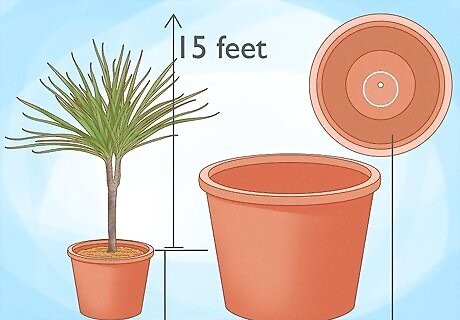
Choose a pot of the appropriate size. Despite the fact that Dracaena Marginata can reach heights of up to 15 feet (4.6 m), it's generally best to use a container that's on the small side. This will help keep the roots bound, allowing the plant to grow larger, healthier, and at a faster rate. Whatever pot you go with should have holes at the bottom to facilitate drainage. It may be necessary to move your plant outdoors or trim it down to more manageable proportions once it starts nearing its full size.
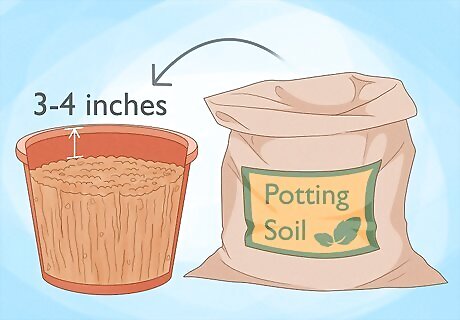
Fill the pot with standard potting soil. Add the soil until it's 3–4 inches (7.6–10 cm) below the rim of the pot. Avoid overfilling—the cane needs to have a little room to expand as it grows, and too restrictive an environment may choke its development. Dracaena Marginata is not particular when it comes to soil conditions—an all-purpose potting mix will work fine. If you'd prefer to cultivate your Dragon Tree outdoors, use a mixture of gardening soil, loam, and natural composts.
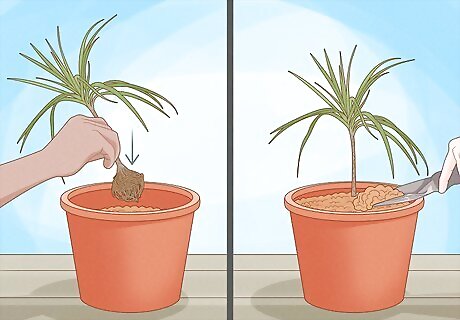
Transfer the plant to the soil. Scoop out a small depression in the center to make room for the plant. If you're potting a whole plant, press the root ball into the depression you made at a slight angle and pile the soil up around the canes to anchor them. If you're working with seeds or smaller cuttings, simply cover them with a thin layer of soil. Dracaena Marginata can get pretty big, so limit one plant per pot. Gently separate the ends of the roots with your fingers to prevent them from clustering together. When starting from seeds, it typically takes 30-40 days for the plant to sprout. The basic planting procedure will be the same whether you choose to grow the plant inside or outside.
Choosing the Right Environment
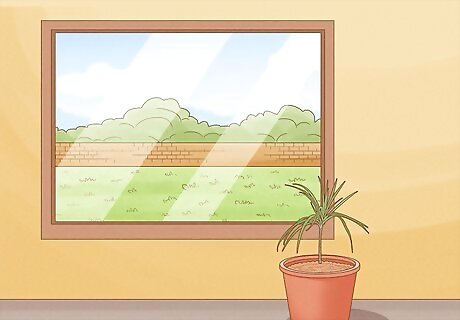
Make sure your plant gets plenty of indirect sunlight. Generally, Dracaena Marginata does best with moderate levels of light. Place the pot beneath a window sill or in a shaded spot outdoors where it can get plenty of exposure while staying out of the most intense rays. Since it adapts so well to variations in light and temperature, so there will be no need to move the plant once you've found a good spot for it. Dragon Tree is also capable of surviving in low light, such as the interior of the home, though this may result in thin, lightly-colored leaves. Direct sunlight is capable of burning or bleaching the delicate leaves.

Keep the plant in warm, humid conditions. Dragon Tree's rapid growth can easily be stunted if its surroundings are too hot or cold. Temperatures between 65-75°F (18-24°C) are generally best, with an ideal humidity of 30-40%. Luckily, this will be right around the average humidity of most homes. Though Dracaena is a hearty species that can survive low temperatures, it's recommended that you bring outdoor plants inside during the cold winter months to keep them healthy. If you live in an area with a particularly dry climate, you can promote the reabsorption of moisture by scattering a thin layer of pebbles over the bottom of the pot before adding the soil.

Let the plant double as an air purifier. Dracaena Marginata isn't just pretty— it can also recycle waste products from the air. In fact, the plant was touted by NASA for its ability to remove compounds like benzene, xylene, and formaldehyde from the environment. If you're used to battling allergens and other pollutants in your living space, the Dragon Tree may be just what you need. Station the plant in one of the central rooms in your home, such as the kitchen or living room, where it can do the most good. For the plant to be able to filter the air effectively, it needs to be kept at around 30-40% humidity. This will be the average level of humidity in most homes.

Add some flair to your home or office. The twisted, woody canes and festive coloring of the leaves makes Dracaena Marginata an eye-catching addition to any room. It's especially useful for introducing a splash of color to otherwise drab surroundings or complementing sleek, contemporary styles of decor. Try lining the entrance of a foyer with lush adult trees, or arrange a young plant on your dining table as a centerpiece. In addition to the standard species, there are also other cultivars of the plant such as Marginata Tricolor, which boasts complex shades of green, red, and gold, and Marginata Colorama, which is distinguished by the thick banding around the edges of the leaves that can make it appear pink or violet.
Caring for Your Plants
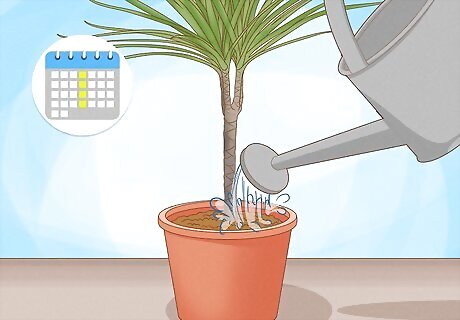
Water the plant roughly once a week. Use a spray bottle to saturate the soil until the water just begins to pool, then let it seep down to the roots naturally. Hold off on watering again until the upper surface of the soil is visibly dry. Be careful not to overwater—doing so can cause root rot. Plants in the Dracaena family are hearty and don't require much moisture to survive. It may take as long as three weeks for the soil to dry out in cool, low light conditions.
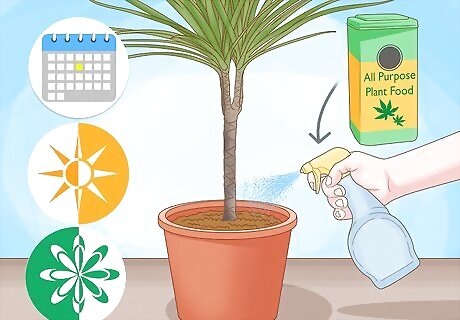
Use fertilizers sparingly. Since Dracaena Marginata is so resilient, it doesn't require much additional help to grow. If desired, however, you can feed the plant with a small amount of water-soluble plant food supplement once a month in the spring and summer. The additional nutrients will keep them healthy during hotter conditions. Select a plant food that's approximately half of the recommended strength.
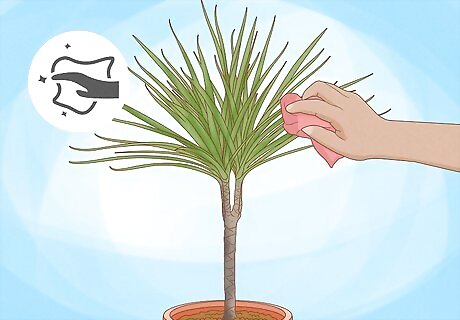
Wipe the leaves with a damp cloth periodically. This will help rid them of spider mites, mealy bugs, and other pests that like to feed on the foliage. It's also useful for removing dust and dirt and restoring nourishing moisture without the risk of overwatering. Inspect your Dragon Tree regularly for signs dust, debris, and unwanted critters.
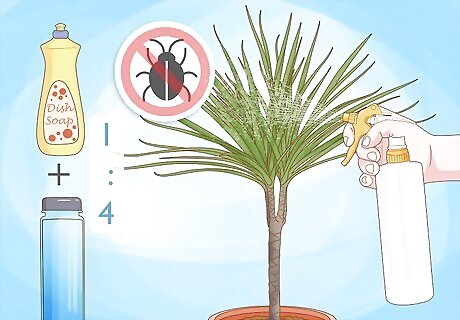
Keep persistent pests at bay. Spraying the leaves with a mild soap solution (about 1 part liquid dish detergent to 4 parts water) can help kill off more determined intruders, or at least deter them from coming back. You won't have to worry about the soap harming the leaves, as they're protected by a waxy coating. Chances of your plants coming under attack by insects are much higher if you've chosen to cultivate them outdoors. If left unchecked, pests like mealy bugs can spread diseases that can eventually kill Dracaena.

Prune dead and damaged leaves. Once the plant has reached full size, you might notice the leaves near the bottom of the cane turning brown and becoming dry or withered. This is normal—it's how sheds foliage in preparation for new growth. Simply pluck the old leaves by hand and dispose of them. If the leaves are only browning in spots rather than all over, it most likely means the plant hasn't been getting enough water.




















Comments
0 comment